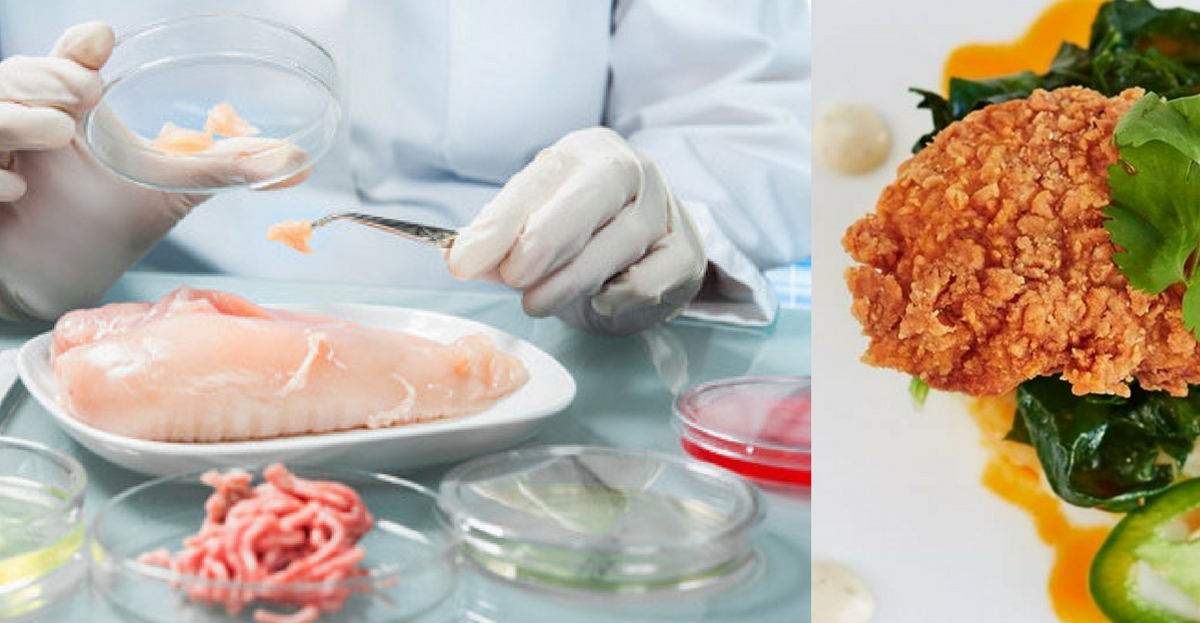This article is designed to inform readers about the recent approval of lab-grown chicken by the US regulatory authorities and its implications for sustainable protein production. It highlights the significance of this milestone in the realm of food technology and sustainable agriculture. Dr. Michael Greger’s expertise in plant-based nutrition and his perspective on the health and environmental aspects of lab-grown meat will provide a valuable insight into the topic.
Introduction:
In an era marked by a growing awareness of environmental concerns and the quest for healthier food options, a remarkable development has taken place—a milestone that holds the potential to reshape the way we produce and consume protein. The United States has recently approved lab-grown chicken for commercial consumption, a decision that carries profound implications for the future of sustainable protein. This article delves into the significance of this approval, the environmental benefits of lab-grown protein, and the expert insights of Dr. Michael Greger on the health and nutritional aspects of this groundbreaking advancement.
A Paradigm Shift in Protein Production: The Approval of Lab-Grown Chicken
The approval of lab-grown chicken marks a monumental shift in the world of food technology and agriculture. Unlike conventionally raised chickens, lab-grown chicken is produced through cellular agriculture, a process that involves cultivating animal cells in a controlled environment. This breakthrough paves the way for a more efficient and environmentally friendly method of protein production, reducing the need for vast expanses of land, excessive water usage, and the emission of greenhouse gases associated with traditional livestock farming.
Furthermore, the approval of lab-grown chicken underscores a crucial aspect of food innovation—the intersection of technology and sustainability. It symbolizes a departure from resource-intensive practices and exemplifies the potential for science to contribute to a more resilient and harmonious food system.

Cultivating Change for a Greener Future: The Environmental Benefits of Lab-Grown Protein
The environmental advantages of lab-grown chicken are undeniable. Traditional livestock farming is notorious for its substantial ecological footprint, contributing to deforestation, habitat destruction, and water pollution. In contrast, lab-grown protein requires significantly fewer resources. It reduces land use by utilizing a fraction of the space required for conventional farming, conserves water through controlled cultivation, and generates fewer greenhouse gas emissions.
By embracing lab-grown protein, we can potentially alleviate the strain on natural resources and mitigate the environmental challenges posed by traditional animal agriculture. This shift towards a more sustainable protein source aligns with the global effort to combat climate change and safeguard our planet for future generations.
Dr. Michael Greger’s Perspective: Health and Nutrition Aspects of Lab-Grown Meat
Dr. Michael Greger, a prominent voice in the realm of plant-based nutrition and health, offers valuable insights into the health implications of lab-grown meat. According to Dr. Greger, lab-grown chicken has the potential to offer a cleaner and safer alternative to conventionally produced meat. It has the potential to reduce the risk of foodborne illnesses, as the controlled environment minimizes the likelihood of contamination.
From a nutritional standpoint, lab-grown meat could be engineered to be lower in saturated fat and cholesterol, addressing some of the concerns associated with traditional animal products. This aligns with Dr. Greger’s advocacy for a whole-food, plant-based diet, which emphasizes the health benefits of consuming nutrient-rich, plant-derived foods.
Pioneering a New Culinary Landscape: The Future of Lab-Grown Protein
The approval of lab-grown chicken not only holds promise for environmental and health benefits but also opens the door to culinary innovation. As this technology advances, it could enable us to explore new frontiers in gastronomy, offering novel textures, flavors, and combinations that were previously unimaginable.
Lab-grown protein also has the potential to address issues of food security by providing a consistent and reliable source of protein, particularly in regions where traditional animal agriculture is impractical or unsustainable.
Conclusion:
The approval of lab-grown chicken in the US is a watershed moment, heralding a new era in protein production and consumption. As we stand at the crossroads of innovation, sustainability, and nutrition, we are presented with an opportunity to cultivate change—a change that resonates with our commitment to the well-being of our planet and ourselves.
This milestone represents a triumph of human ingenuity, a testament to our ability to harness science for the greater good. By embracing lab-grown protein, we embark on a journey towards a more sustainable and harmonious future—one that nourishes both our bodies and our planet.
In the words of Dr. Michael Greger, “The future is ripe for food innovation, and lab-grown meat is just one exciting avenue that holds promise for creating a healthier and more sustainable food system.” As we move forward, let us continue to explore, embrace, and champion the transformative power of sustainable protein.




